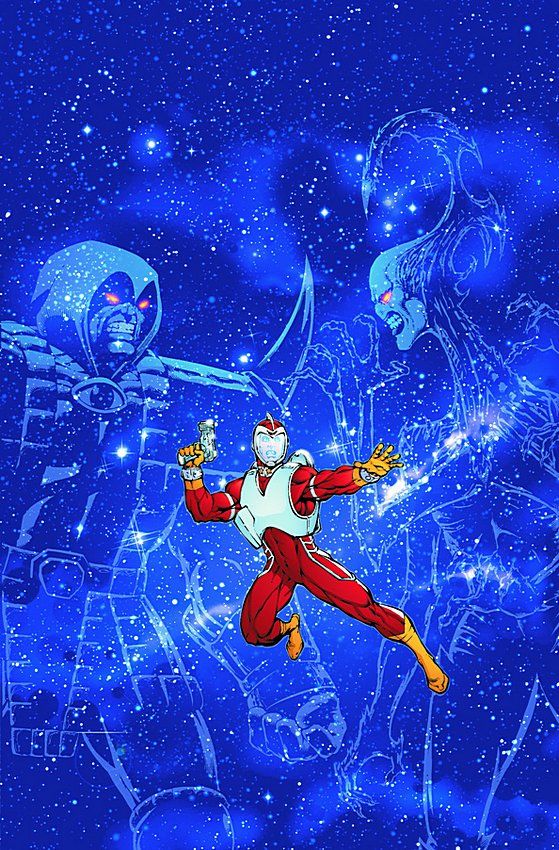Readers tuning in for the regular fare of Rann-Thanagar Holy War get a special treat in this issue, as writer Jim Starlin also draws the middle half of the issue devoted to the origin of Synnar. However, the origin is hardly anything revolutionary as Synnar is revealed to now be the mortal incarnation of the Demiurge, God’s architect. (The original Synnar is the mortal host for the Demiurge.) At the beginning of time, God’s first creation was the Demiurge, a being instilled with creativity to create the actual universe for God. Things quickly go awry as the Demiurge feels betrayed when seeing the wrathful nature of God and soon plots rebellion, only to fail and spend eons slowly regaining his power in the hopes of having another shot at the Almighty.
The premise isn’t bad, but the exposition in the middle of the issue stops the story dead. Starlin spends far too much time on Synnar’s descriptions, which are filled with purple prose and pseudo-poetry. The art in these sequences is a mix of traditional pencil-and-ink and computer effects, but they work well together. Starlin’s pencils, though, look rushed in spots with figures not having their usual crispness, which suggests that maybe Starlin wasn’t originally meant to draw these sequences -— but it’s still better than Ron Lim’s work in the rest of the issue. A two-page spread of the war between God’s forces, including familiar faces like the Spectre and Etrigan the Demon, and the Demiurge, though, is one of the best things Starlin has drawn in years.
The rest of the issue has the cosmic heroes in a holding pattern as they prepare to attack Synnar’s forces as well as contend with the impending invasion of Rann by Thannagar forces. Adam Strange finding himself helpless with his Zeta beam transporter offline and facing forces much more powerful is interesting to see as he struggles to maintain composure and morale in front of the others. He is obviously out of his element and unsure of himself after mistakes in previous issues, but stubbornly maintains his air of authority. An alternative is suggested in the reincarnation of Captain Comet (posing as his slacker nephew), who grows more confident and like his former self with every issue, often taking charge. Here, Strange is noticeably peeved and confused by Comet’s behavior, but, instead of reading like an interesting conflict, it comes off as yet another small plot alongside the numerous other small plots that make up this book.
Nothing in this issue seems substantial enough to carry it, not even the supposedly epic Synnar origin, which is a familiar Lucifer-esque story with no fresh insights. Like the rest of this series, there are some interesting ideas, but nothing to really carry the book.

